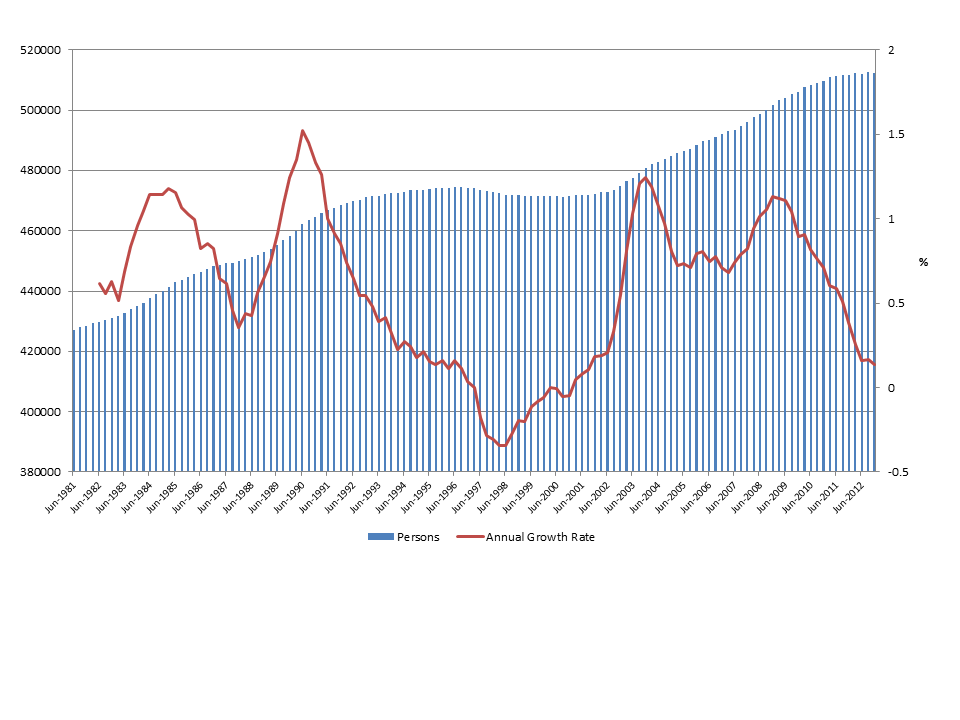Population projections are not forecasts, they are projections based on a combination of assumptions in relation to fertility rates, mortality (life expectancy) rates and migration (both interstate and international). These assumptions are usually based on historical trends.
The accuracy of population projections is dependent on the method employed. This is particularly important in Tasmania's case. The changes in Tasmania's population do not follow 'normal' patterns compared with Australia or other Australian states and therefore projections are very difficult to undertake.
Since 1981, Tasmania's population has grown by around 85,000 people - a growth of almost 20 per cent, or 0.7 per annum (see below chart). This growth occurred for a number of reasons. The reasons also contribute to why this rate of growth is unlikely to continue. The growth was primarily driven by natural increase (more births than deaths) which resulted from the large cohort of baby boomers (those born 1945 to 1965) reaching reproduction age. Population growth was complemented by increases in interstate and international migration during periods of economic growth.
Tasmania's current and future population is highly influenced by the potential for reproduction and the age of migrants. While fertility rates may remain around replacement level (2.1 births per woman over her lifetime), the actual number of births achieved is dependent upon the size of the reproductive cohort (i.e. those women of childbearing age). In Tasmania, this cohort is decreasing in size; due to declining fertility rates since the baby boom and also net migration losses in the childbearing ages.
The risk in undertaking population projections is not accounting for the size of the reproductive cohort and the migration movements which impact on the size of this cohort. If current and historic migration trends continue, the size of the cohort will continue to decline. Even if the fertility rate remains constant, the actual number of births will decrease.
In sum, using historical trends to inform future patterns is problematic for all jurisdictions, but particularly so for Tasmania. This is exacerbated by not accounting for the age of migrants.

